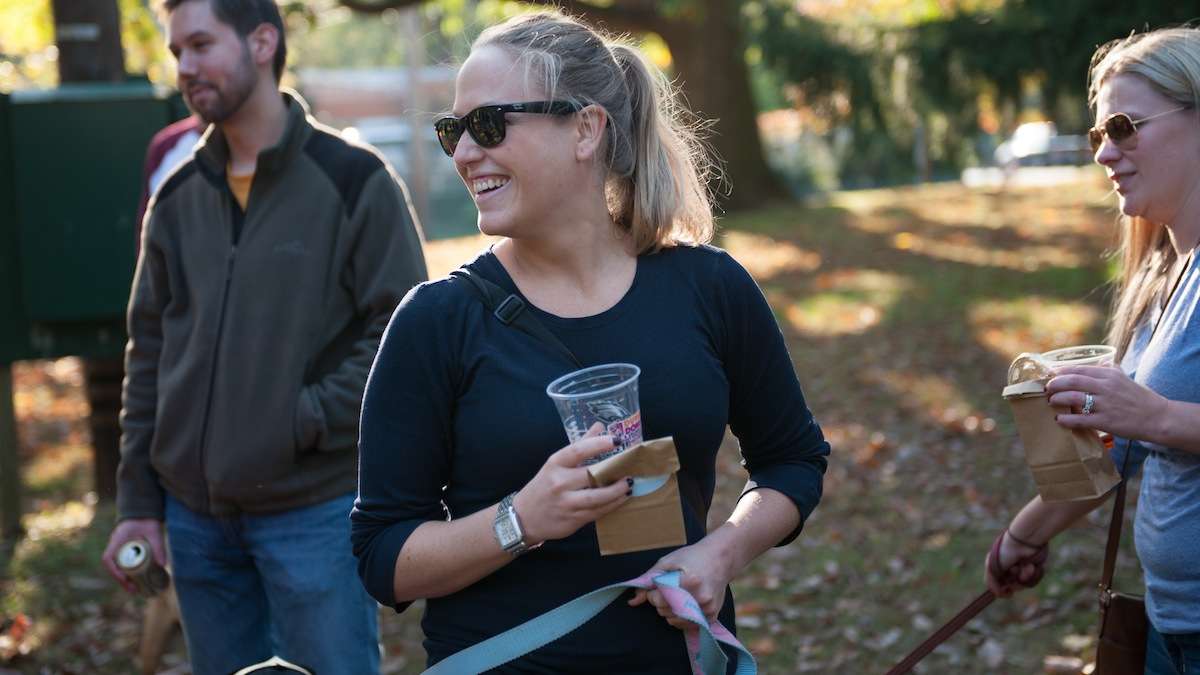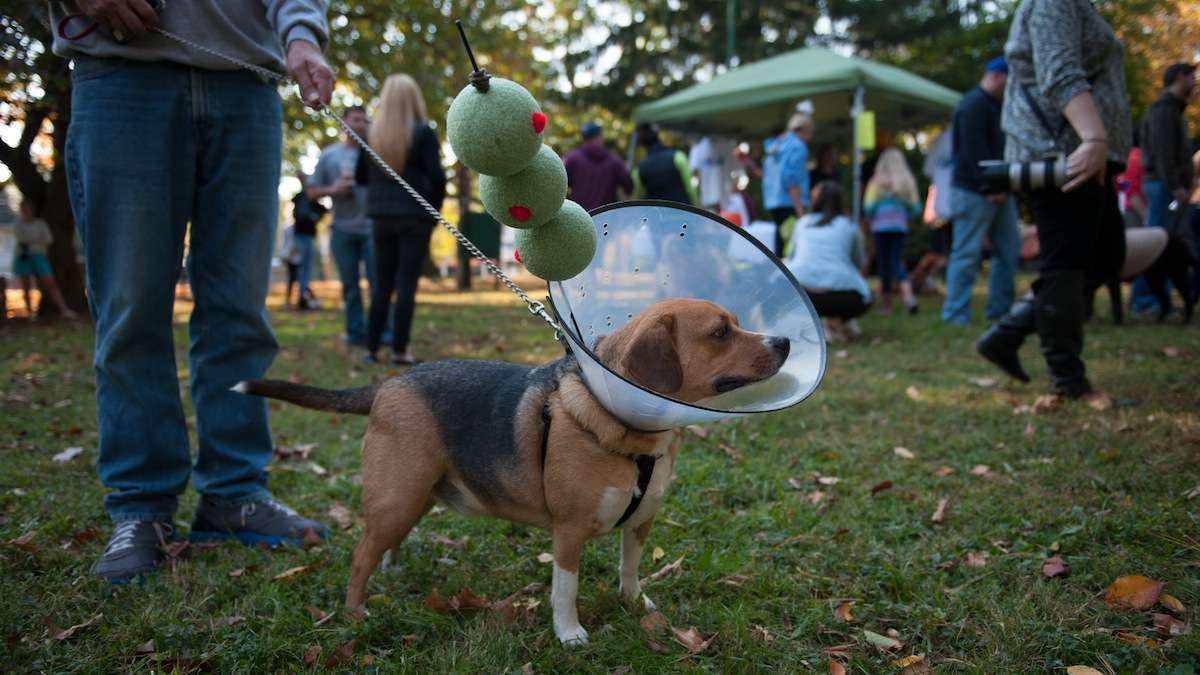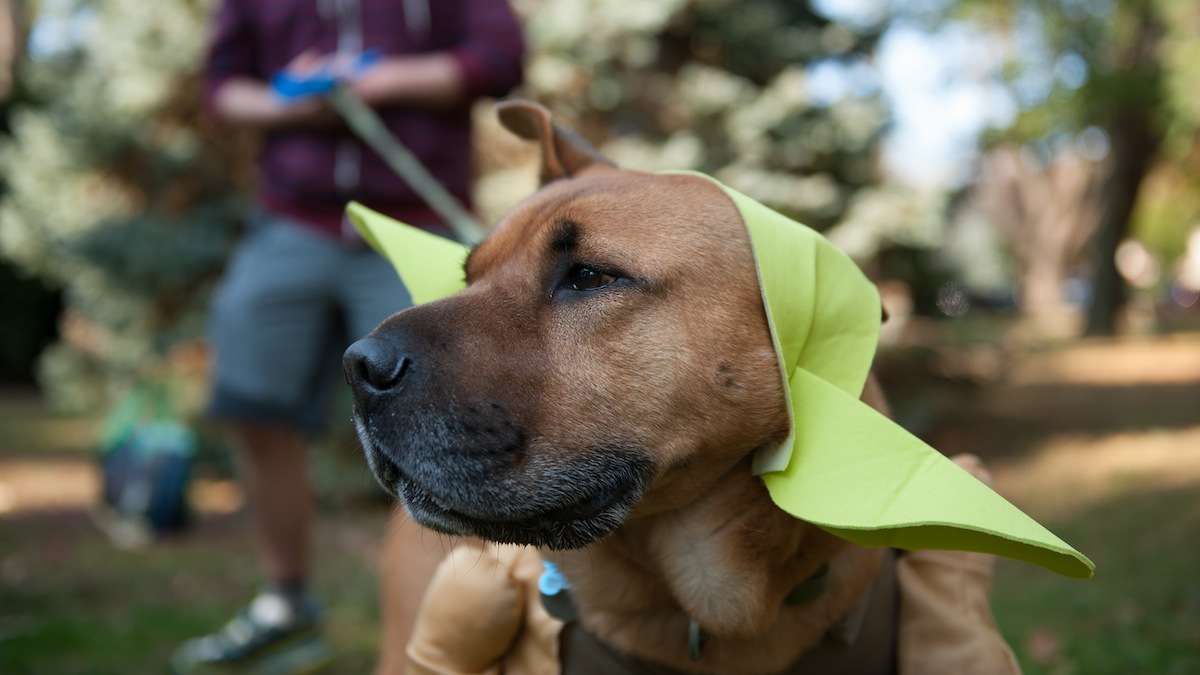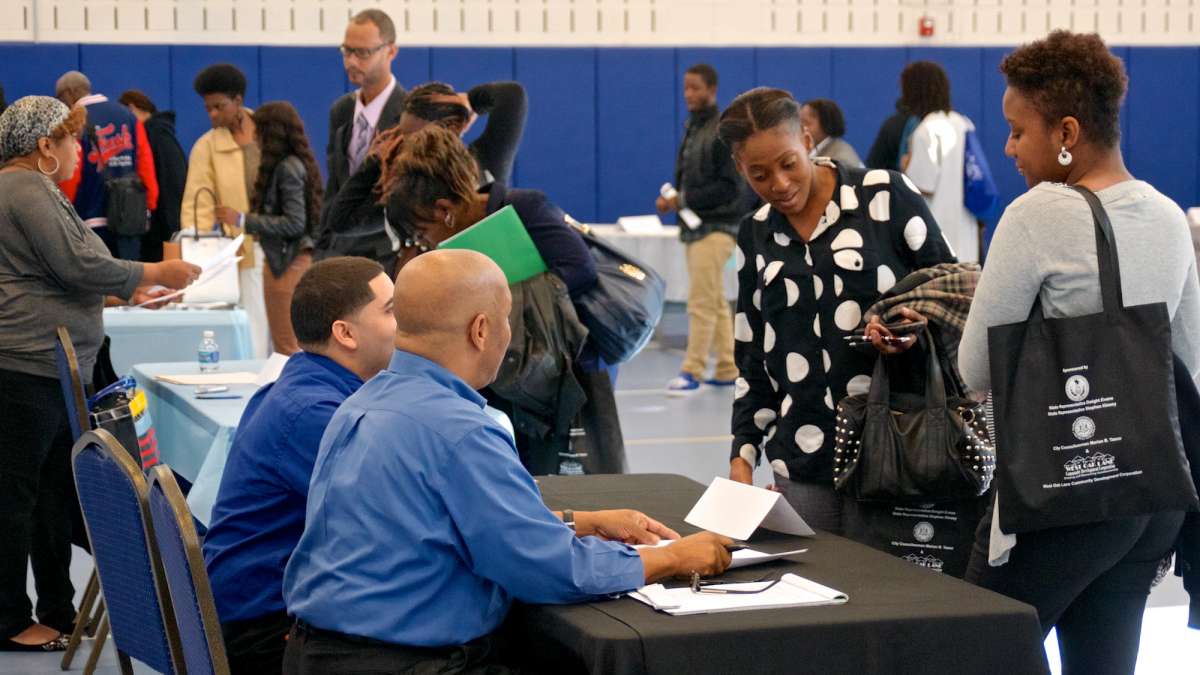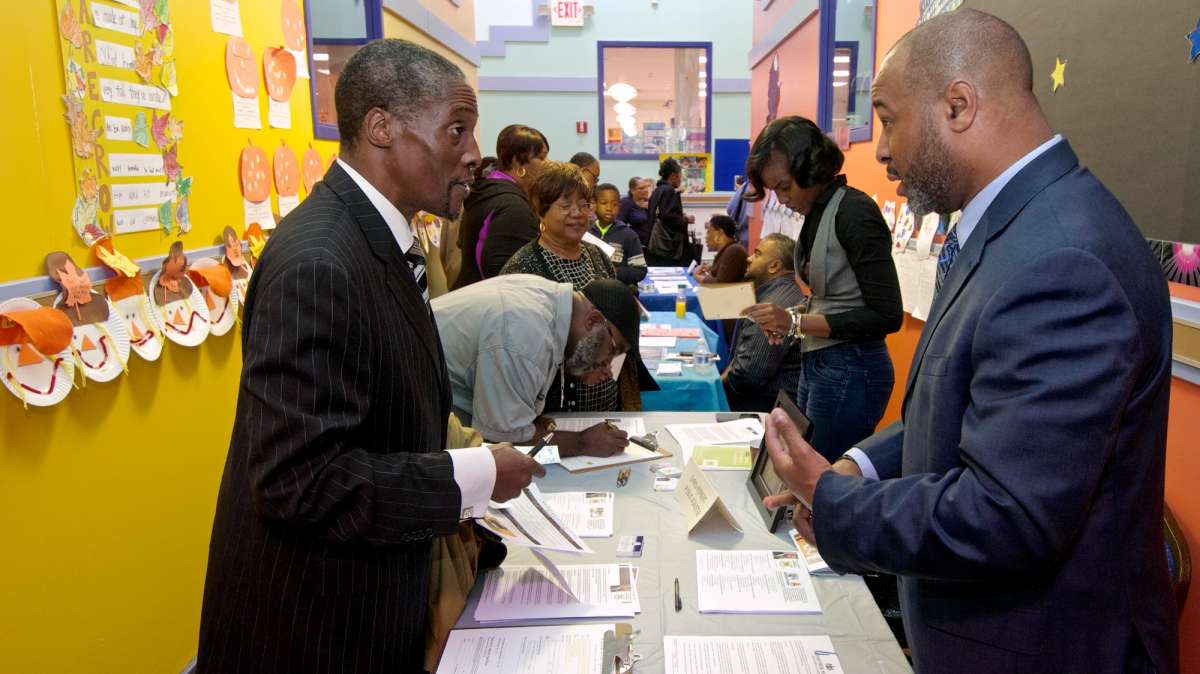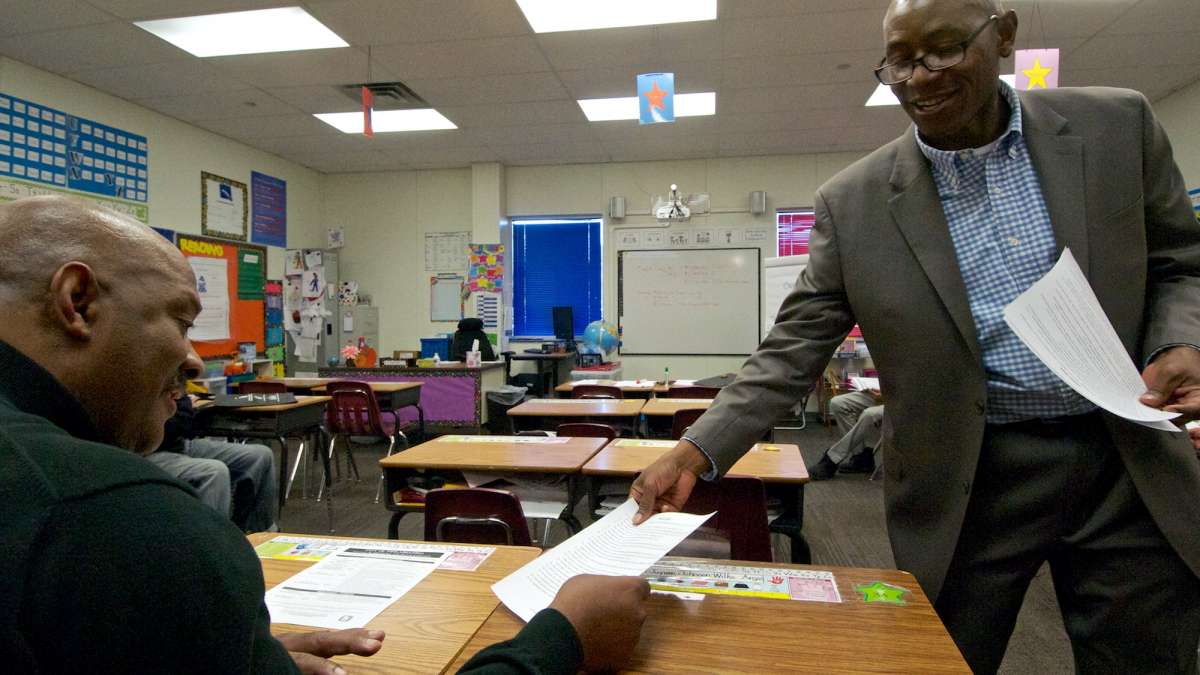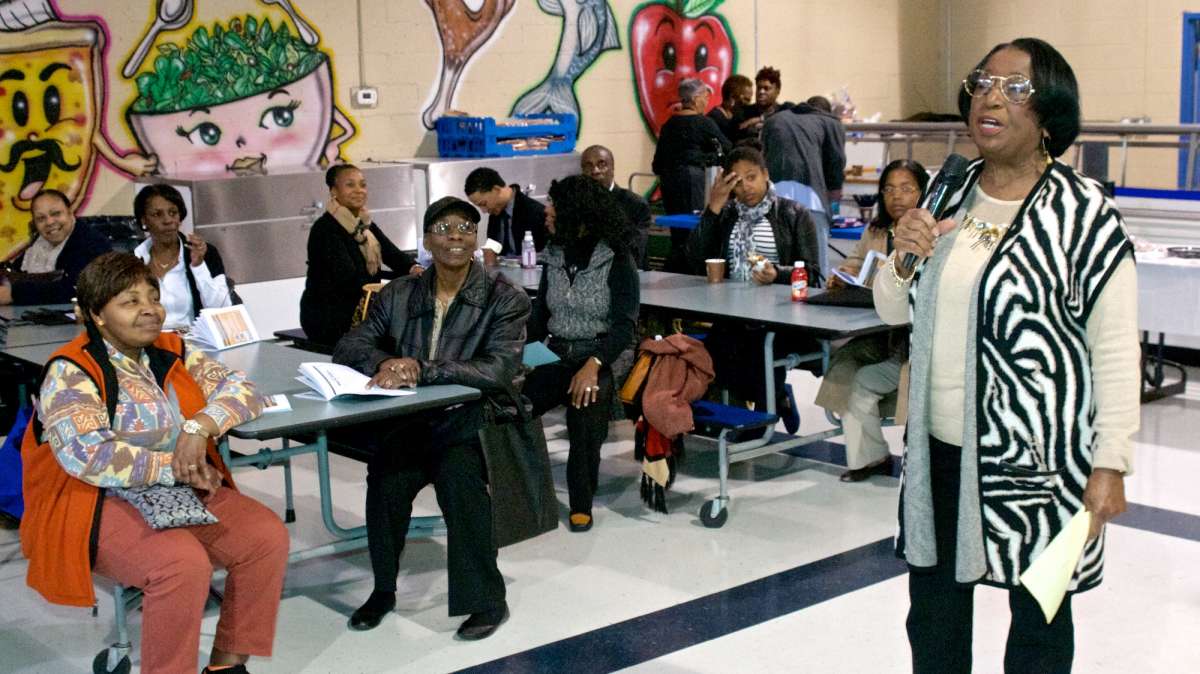Zombie fiction, Ebola fact, and obsessive fear of an invisible menace
On the trailer, a father with two kids plays along with me. “Did Ebola infect the zombies?” he asks.
Nodding my head, I reply that even the Centers for Disease Control and Prevention has been here.
“What happened?” he asks.
“Their serum did not work,” I say, grinning. “And they weren’t wearing enough protective gear. Something about their necks being exposed.”
Everyone laughs. It seems the right thing to do when looming before us is a field full of our most vivid nightmares: virus-ridden, flesh-eating people who were once just like ourselves. Worse may be what’s in the real world: the nameless and the enormous and the uncontrollable.
A night on zombie patrol
It’s a warm October night. The stars are twinkling, the moon hangs low. Seated on a trailer, we are pulled by a farm tractor — bumping along a deeply rutted road into a broad cornfield along the Connecticut River, four hours north of Philadelphia.
There are 16 of us — a portion of the hundreds of patrons who have visited this interactive Halloween entertainment venue over the last few weeks. I am their commander: narrator of the apocalypse.
A loudspeaker behind me howls out sirens reminiscent of tornado warnings I heard as a boy growing up in the Midwest. The siren is interrupted by an announcer: “This is the National Emergency Alert System—” Static fuzzes him out. “Prolonged exposure will result in certain death …”
There are the college-aged and the elderly, middle schoolers and soccer moms. Behind them are 15 mounted, high-powered assault rifles — paintball guns.
“Are the zombies going to get me?” the boy nearest to me asks.
I shout above the sirens, the tractor engine: “Not if you get them first!”
One woman has a baby in a cloth carrier on her back. “You sure you want to bring the baby?” I ask. The man next to her, possibly the father, says, “She’ll be fine.”
I tell the story: the “virus” that got loose in Canada, re-animating the reptilian parts of victims’ brains, the infected walking dead. How we good citizens, upon this retrofitted 30-foot-long trailer, must take aim and fire into their heads (the only way to kill one for good). They have invaded our town, our church, hospital and farm, our very homes—and it’s up to us to stop them.
Zombies? Real life is scary enough
On the one hand, it’s entertainment. Good, old-fashioned fun for the new millennium — like the arcades of yesterday where you shot at Western-themed moving targets like beer bottles and cowboy hats. On the other hand, people pay the ticket prices — ranging from $20 to $60 — for something else altogether.
It’s in their eyes, in the questions they ask, the nervous jokes they crack — fear perhaps. Helplessness comes to mind, with a twinge of cynicism.
On the trailer, a father with two kids plays along with me. “Did Ebola infect the zombies?” he asks.
Nodding my head, I reply that even the Centers for Disease Control and Prevention has been here.
“What happened?” he asks.
“Their serum did not work,” I say, grinning. “And they weren’t wearing enough protective gear. Something about their necks being exposed.”
Everyone laughs. It seems the right thing to do when looming before us is a field full of our most vivid nightmares: virus-ridden, flesh-eating people who were once just like ourselves. Worse may be what’s in the real world: the nameless and the enormous and the uncontrollable.
It’s nothing new.
A decade ago, it was what, in part, brought me, my wife and two children fleeing from the large population center of Washington, D.C. The 2001 Pentagon attack I witnessed on my morning hour-long commute. The anthrax attacks on Congress that began the week after September 11, killing five and infecting 17. The sniper attacks the following year during which two men drove across the region, including a stop at the Home Depot store near our home, shooting and killing random people — 10 in all — from the trunk of their Chevrolet Caprice.
Tonight in western Massachusetts, it’s still the invisible menacing. Like the Ebola patient sent home undiagnosed or the unprepared hospital. The government’s near reluctance to get involved which gives way to the empty assurances, the blame, and the double-talk. The appointment of a “czar,” the infection of a New Yorker.
So says Richard Preston, the author of the 1994 best-selling non-fiction thriller about Ebola, The Hot Zone: “Ebola is invisible,” he told the New York Times recently. “It’s a monster without a face. With the science that we have now, we can perceive Ebola as being not one thing but as a swarm, and the swarm is moving through the human population and expanding its numbers. It has the qualities of a monster.”
There’s the ever-rising global temperatures, with this year slated to be the hottest on record since humans began measuring in 1880. The Islamic State beheads another Westerner. Our children are sent again to fight. A wild man gets in to the White House and there’s no one home to stop him.
The familiar powerlessness outside of this cornfield. And no one — least of all our government — is equipped to save us.
Not so at the Zombie Night Patrol. This crowd won’t let any of the living dead on our trailer.
We approach the diorama and the creatures — primarily well-padded local college and high school kids — come out, banging down doors and waving their arms. My 16-year-old son is out there somewhere tonight, wrapped in duct tape and shredded yoga mats, ready to take the hits.
“Fire!” I yell, and the volley commences.
I wonder if he has been struck.
Masked zombies jump off the roofs of broken-down vans and utility trucks, hurling cardboard boxes and empty 50-gallon drums. The crowd on my trailer is astonished that they continue to hobble toward us despite the number of paintballs that splatter them.
The woman with the baby at the beginning of the trip has an empty carrier.
“What happened to your baby?” I say.
“I fed it to the zombies,” she laughs.
Preparing for reality
They have been with us for nearly two centuries since the appearance of the word in an 1819 edition of the Oxford English Dictionary. According to The Book of the Dead, an 1889 article in Harper’s Magazine titled, “The Country of the Comers-Back” described corps cadavres in the Caribbean, which means “walking dead.”
Then came the 1929 book by William Seabrook, which solved the mystery. Zombies were tied to practices of voodoo and the forced slavery of the Africans brought there. The idea that a soul could be removed and then replaced by a sorcerer or a God. Think about reanimating dead people to become your eternal servants. The character Michonne and her two chained zombie slaves in season three of AMC’s The Walking Dead.
Last week, the television show became the most-watched drama in the history of cable, with more than 22 million viewers of its fifth season’s premiere episode.
“Zombies are important as a reflection of ourselves,” a Stanford University scholar has said. “The ethical decisions that the survivors have to make under duress and the actions that follow those choices are very unlike anything they would have done in their normal state of life.” Culture today has an increasing capacity for violence, for “casting doubt about the upsides of modernized society.”
Last week, in social studies class at the middle school my daughter attends, she and her friends formed the EPEA, or the “Ebola Precaution Education Association.” They don’t share water bottles and wash their hands many times a day. “We make funny things up around current events,” she tells me.
You don’t have to look far to find zombie currency: The Connecticut River Valley, like every region, has its own Zombie Fest: It’s to Die For — with a zombie dance “ball,” “zombie games,” a monster bash. Last week, in Tyler, Texas, a zombie-themed bra took in $375 at a charity fundraiser. And don’t forget the CDC itself — whose embattled director has been in the news lately after making his own mistakes with Ebola preparedness. Three years ago, he adapted to the craze with “Preparedness 101: Zombie Apocalypse” — a federal government-sponsored public campaign hoping to get more people to order emergency kits for real disasters like flood and tornadoes. Complete with a gory 36-page novella, a “zombie blog” and slick horror-movie posters, the campaign website crashed after too many Americans clicked.
Then last week, a British company released its “zombie-proof” log cabin, with solar panels, security cameras and X-box, for $113,000. Out at Michigan State University, there’s the acclaimed anthropological zombie survival course, “SW290: Surviving the Coming Zombie Apocalypse — Disasters, Catastrophes and Human Behavior.” The Denver Zombie Crawl is in its ninth year and considered one of the country’s largest, to name a few.
These sorts of events have recently become the latest submarket of the haunted house industry, now worth more than $300 million. Haunted houses are a subset of the entire industry (costumes and decorations) upon which Americans plan to spend nearly $7 billion this year. There’s more than 2,500 attractions worldwide, mostly in the United States, according to Patrick Konopelski, president and owner of Shocktoberfest in Sinking Spring, Pennsylvania, and president of the Haunted Attraction Association. More elaborate than ever, they are combining with multiple interactive entertainment like concerts, corn mazes, mud runs, and most recently, zombie paintball.
In the Philadelphia area, there’s the Valley of Terror in West Chester; Night of Terror in Mullica Hill, New Jersey; Jason’s Woods in Lancaster; Valley of Fear in Bucks County, PennHurst Asylum in Spring City; Frightland in Middletown, Delaware; and, billing itself as “Pennsylvania’s Premiere Haunted Scream Park,” Shocktoberfest in Sinking Spring. Most feature paintball.
The unreal undead
At the end of our journey, the trailer stops and I order that the patrons take their fingers off their triggers and turn toward the center again, away from the mounted guns. Everyone is pumped up after shooting well over a thousand paintballs.
“There they are,” someone shouts. Sure enough, a group of four or five zombies are shambling toward us. There’s screaming and laughter from the trailer, moaning from the zombies. Beyond them, another group is eating a survivor. You can hear her shrieking. One zombie makes it up on the trailer.
Suddenly, the man beside the woman with the baby shouts, “You are not getting on here!” and pushes the zombie off the trailer. It rolls onto the ground.
I notice the baby is once again in its carrier on the woman’s back. But the man once sitting with her is now hanging halfway off the trailer.
“Get him,” someone yells. “A survivor.” I reach down and pull the man up. He returns to his seat next to the woman with the baby.
“That’s why I’m doing it,” he says. He laughs, pointing to the baby.
Then, our trailer starts moving again under the starlit October night, toward the home base, where we will reload the weapons and take on what seems like an endless line of 21st century thrill-seekers, hoping to see the unreal become real, the dead to rise again before them, if only for a little while.
—
Michael Carolan was born in Kansas City. He teaches writing and literature at Clark University. He lives in Western Massachusetts with his wife and two children.
WHYY is your source for fact-based, in-depth journalism and information. As a nonprofit organization, we rely on financial support from readers like you. Please give today.




